Serendipity opens up your mind
Serendipity opens up your mind
This 2024 edition of the Schibsted Future Report is the tenth. Upon reflecting on the past reports, one article stands out as unexpectedly relevant today for editor Ann Axelsson. It celebrates the imagination and creativity that comes from unexpected encounters. In this tenth report we also look back at some of the trends we have looked into during the years – read more here.
By Ann Axelsson
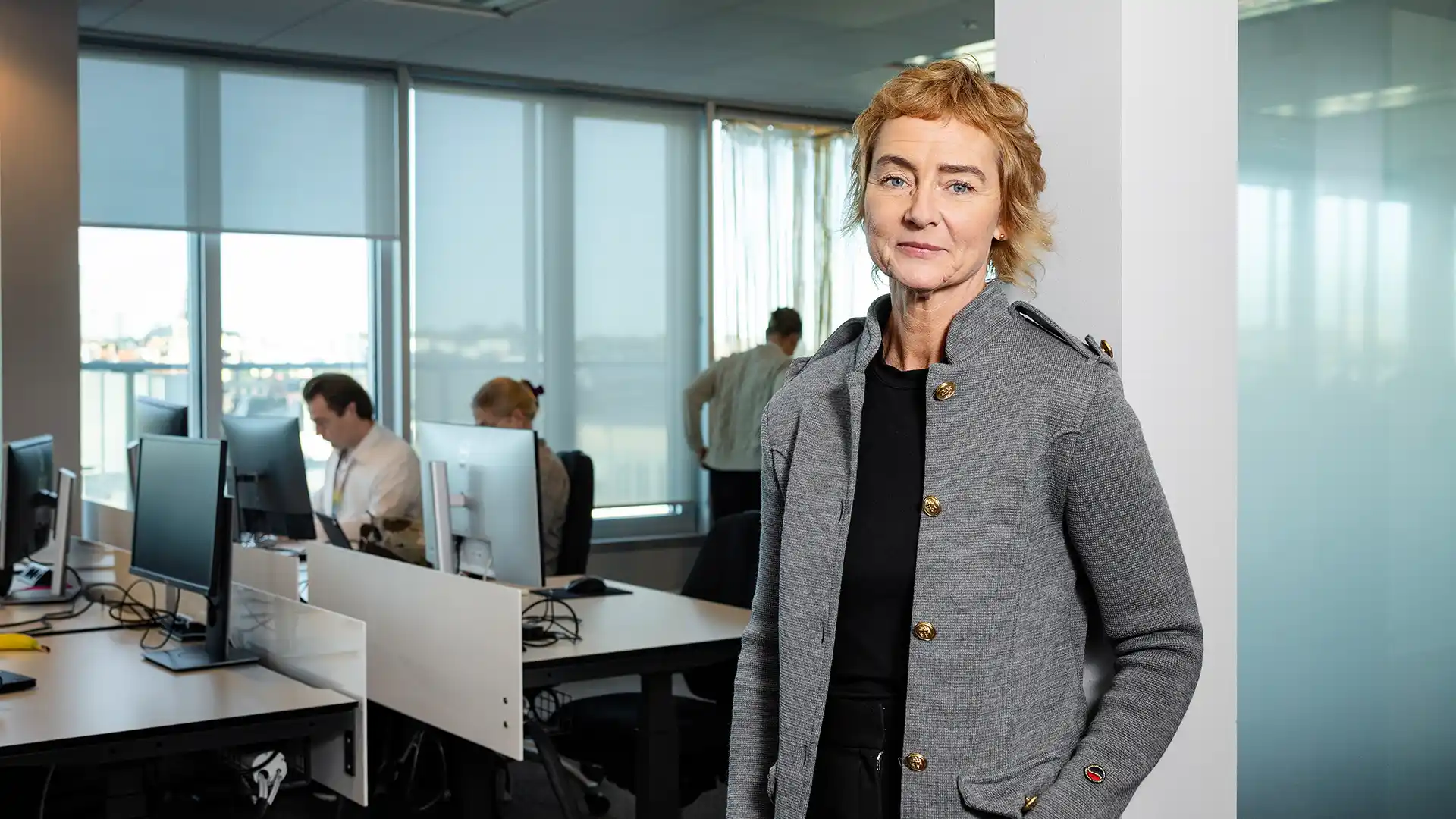
Serendipity opens up your mind
This 2024 edition of the Schibsted Future Report is the tenth. Upon reflecting on the past reports, one article stands out as unexpectedly relevant today for editor Ann Axelsson. It celebrates the imagination and creativity that comes from unexpected encounters.
In this tenth report we also look back at some of the trends we have looked into during the years – read more here.
By Ann Axelsson
Do you recognise the feeling of not knowing where an idea came from? Suddenly it was just there, perhaps because you let your mind wander in unplanned directions. Or sometimes a name you didn’t know you remembered simply pops into your head. Our brains truly work in mysterious ways. Our brain is also the inspiration for the AI technology we have today.
For the past ten years, we have produced the Schibsted Future Report. From the very beginning, AI was an important theme, and over the years, we have dived deep into the technology behind it – as we also do now. But when I started to reflect on all the reports we’ve produced, one article came to mind as being unexpectedly relevant in our discussions about technology and what it means to us as humans and society.
The risks of filter bubbles
It’s a story written for the 2016 report by Professor R. Ravi, who was involved in setting up a digital competence program for Schibsted. The title is “Serendipity – in search of the human algorithm,” and it’s about the risks associated with filter bubbles. But as I now reflect, it’s the very concept of serendipity that has stuck with me – and the benefits of serendipity that often lead to creativity and new ideas. The concept of serendipity comes from a Persian fairy tale about the three princes of Serendip, who were always making unexpected discoveries of things that they weren’t necessarily searching for. Professor Ravi describes the benefits of serendipity in his article like this:
“Letting one’s attention wander is an important precondition for free association and discovery via synthesis of ideas from various unrelated domains. Indeed, bright flashes of creativity are often preceded by such wanderings among seemingly unrelated concepts.”
Perhaps this ability is the biggest differentiator between us humans and AI applications, however advanced they are. And what will happen if we let go of that and lean too much on machines and the existing data from which they learn?
With that in mind, it’s no coincidence that the illustrations that accompany the AI articles in this report are not made with the help of AI. They are made by a human hand. Our photo editor Emma- Sofia has printed and cut out photos to create paper figures, put them on sticks, and placed them on a scene made of cardboard. An idea we came up with after a visit to the Museum of Technology in Stockholm. AI has and will continue to make wonders, no doubt. Not least in the media industry. But I believe that it’s important to also remember that human creativity is unique.
AI is like electricity
Over the years we have put different names on the new realities we’ve foreseen.
We have spoken of the synthetic decade, of the Internet of Things, and of the Metaverse. But perhaps the description given in the 2018 report by Azeem Azaar, Schibsted’s VP of Venture & Foresight in Schibsted2016-2017, is the very best. He described AI as electricity, an infrastructure that will power all parts of our daily lives, without us even noticing.
Speaking of serendipity, we have through the years also tried to capture trends that are not only technology-driven but have also caught people’s interest. Like biking into the future, or what a truly sustainable society looks like, or Formula 1. In this tenth edition, we look back on some of the trends we have written about to see if we were right – or wrong. Open this fold-out to find out.
As an editor looking back, there is one obvious reflection about the report itself and about Schibsted. Today, Schibsted is reaching out to people more often as one company in itself. Millions of end-users meet us every day through Schibsted’s login service Schibsted Account. And in the last few years, this report has become an important tool to spread the story of who we are and what we do.
Ten years is a long time, not least when considering the speed of change in technology, society and business. But from other perspectives, it’s not long at all. This year we have asked all contributors to pick their favourite song from the last decade. I was certain which song I wanted to pick – until I realised that that song was about 20 years old.
I hope you enjoy all the songs on our Schibsted Spotify playlist, individually selected by several creative and unique human beings.
[Sassy_Social_Share]
Facts
10 issues of Schibsted Future Report have been published.
174 people have contributed with text to the reports.
50,000 is the approximate number of reports distributed.

Ann Axelsson
Senior Product Manager, Strategic Communication, Schibsted
Years in Schibsted: 25
My favourite song the last decade: Paper Doll – John Mayer
A decade of visions – and a few failures
A decade of visions – and a few failures
Eternal life, the metaverse, Google glasses: they came, they saw, but did they conquer? For the past ten years, the Schibsted Future Report has pried open the door to the future. It has seen a decade of visions – and a few failures. We decided to look back at some of the trends we highlighted in the course of those years to see how they turned out.
By Erica Treijs

A decade of visions – and a few failures
Eternal life, the metaverse, Google glasses: they came, they saw, but did they conquer? For the past ten years, the Schibsted Future Report has pried open the door to the future. It has seen a decade of visions – and a few failures. We decided to look back at some of the trends we highlighted in the course of those years to see how they turned out.
By Erica Treijs
Future Report 2018: Biking into the future
Cars and cities make a bad combination. A car takes up a lot of space. On average it stands idle 96% of the time, and when it does move, it’s like a heavy, dangerous, noisy colossus which, if run on fossil fuel, also causes global warming.
For obvious reasons, a bike takes up much less space. And in recent years this 200-year-or-so invention has undergone a metamorphosis. Already in the 2018 edition of the Future Report, we predicted that we would cycle into the future, and we now have modern designed pedal-driven contraptions for every occasion and purpose. Not even cycling uphill with a heavy load has to end in snot and sweat as long as your electric motor kicks in at the first sign of an incline. When it comes to bicycle-friendly cities, Copenhagen is in front position, with lots of spacious and clearly signposted bike lanes.
Cities like Oslo and Stockholm still have some way to go, unfortunately, but that hasn’t impeded the advance of rental bikes or electric scooters, all of them based on access to new technologies, and recent years have seen huge developments in sensors, mobile technology, GPS trackers and artificial intelligence. Everything is paving the way for a new sharing economy, and this is just the beginning.

In the 2018 edition of the Future Report, we predicted that we would cycle into the future, and we now have modern designed pedal-driven contraptions for every occasion and purpose.

In the 2018 edition of the Future Report, we predicted that we would cycle into the future, and we now have modern designed pedal-driven contraptions for every occasion and purpose.
Future Report 2018: How to make friends with robots
Being digitally represented by an avatar is one thing, but having a robot as a friend is something quite different. That was precisely what we predicted would happen within just two years when we published the 2018 edition of the Future Report. A little robot that served you freshly brewed coffee in bed with a smile on its steel-grey lips might not be such a bad idea, but getting the day’s main headlines projected onto the ceiling seemed a little over the top, as did having a robot decide what you should wear.
Still, if a robotic friend were to become a reality in the foreseeable future, what would it look like? Research shows that we tend to think of robots as charming as long as they resemble something non-human, like a bear or a rabbit, but that we flinch the moment we meet robotsthat resemble humans. Perhaps the question shouldn’t be whether or not robots should resemble humans, but rather whether they would come to redefine what it means to be human? What ethical standards and values should your robotic friend have to really be your friend?
We tend to think of robots as charming as long as they resemble something non-human.
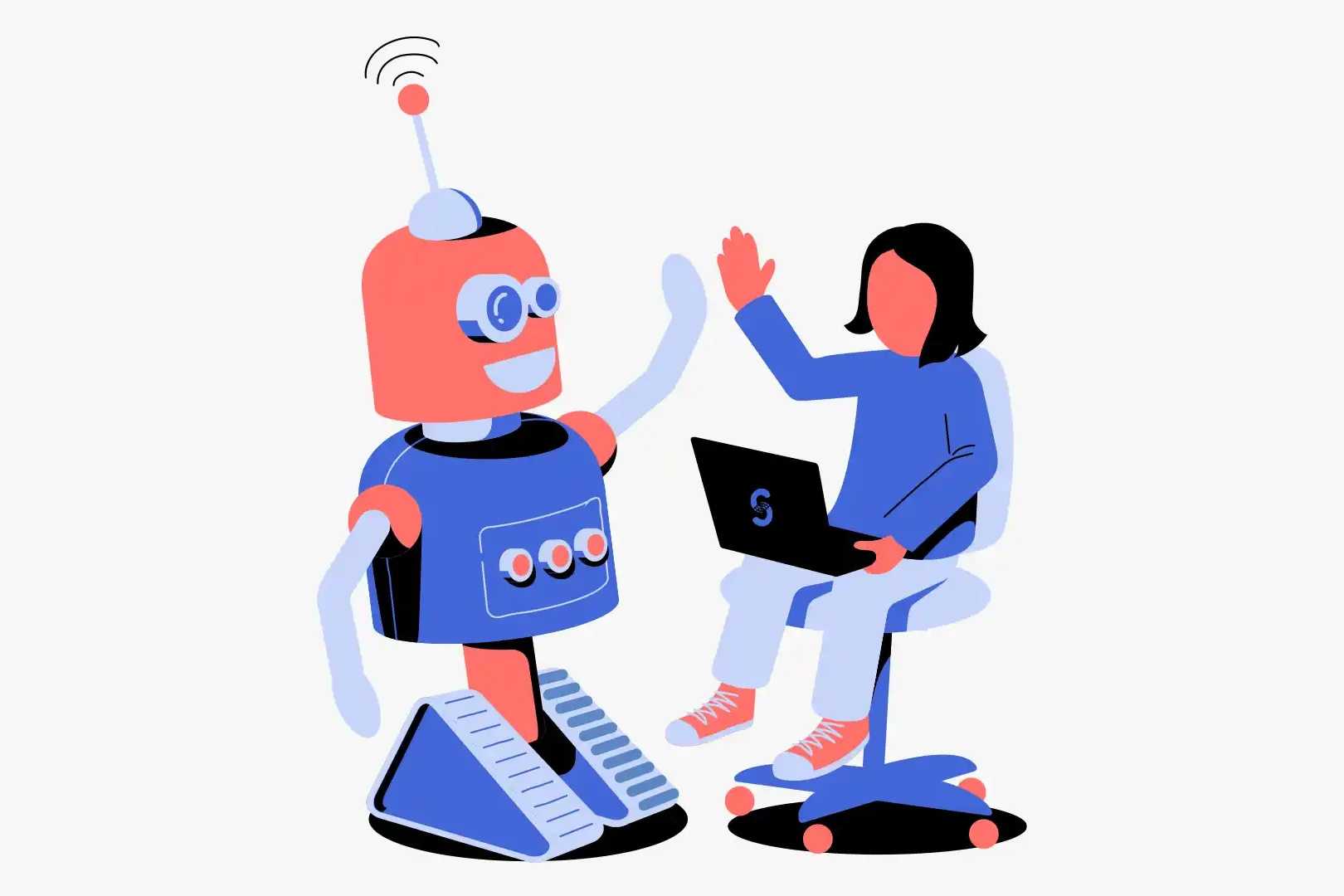

We tend to think of robots as charming as long as they resemble something non-human.
Future Report 2019: A new space age
“Don’t be afraid of the man in the moon,” sang David Bowie in his self-titled debut album, two years before Neil Armstrong took one giant leap for mankind in 1967. And only a month before the Apollo 11 space flight, Bowie sang about Major Tom, and the people on Earth joined in and stared into space. There’s something alluring out there, in the unknown. But maybe it’s like Apollo 11 astronaut Michael Collins said, that the moon is not a destination; it’s a direction?
In 2019 we wrote about the showdown in space, which no longer is happening between countries but between private entrepreneurs. Elon Musk, founder of Tesla and SpaceX, believes that when World War III breaks out, civilisation will survive on Mars. Jeff Bezos, Mr Amazon, sees space more as a place to do our dirty work, where mining, manufacturing and recycling will be done as part of a vision to keep Earth “clean.”
And even though we can now travel into space with SpaceX, there’s little talk of colonies on Mars and mining operations. The rockets seem to have ended up in a more mundane sphere as carriers of satellites and space station equipment. And perhaps most importantly, new areas of application here on Earth are often found for innovations that were developed for space technology.

Famous entrepreneurs don’t speak very loudly about the next space age anymore.

Famous entrepreneurs don’t speak very loudly about the next space age anymore.
Future Report 2017: Reality is getting hacked
Suddenly we saw them everywhere: people who moved around the city, often in groups, with their phones at the ready. They were out hunting, but not for blood; instead they were frantically searching for some of the 700 figures in the Pokémon Go game. Using mobile phone cameras and geolocations, the game combines virtual and actual reality, and when it was launched it spread like wildfire. For a while, the game had more daily users in the US than Twitter, and users even spent more time on the app than on Facebook. One of the truly unique features of Pokémon Go was that its users not only made imaginary or digital friends; it created communities of people who met and searched for Pokémon both in their own towns and further afield. Of course, the movement had its own “pokestops,” where more commercial actors made a fast buck from the hype. Its huge success in 2017 is unquestionable, so its sudden demise and the fact that no successors pursued the augmented reality track came as a surprise. But the game world is a lucrative hunting ground, with no limits on technological innovation. No one knows what will come next, only that more will come. A lot more.
In 2017 Pokémon Go was a huge success.
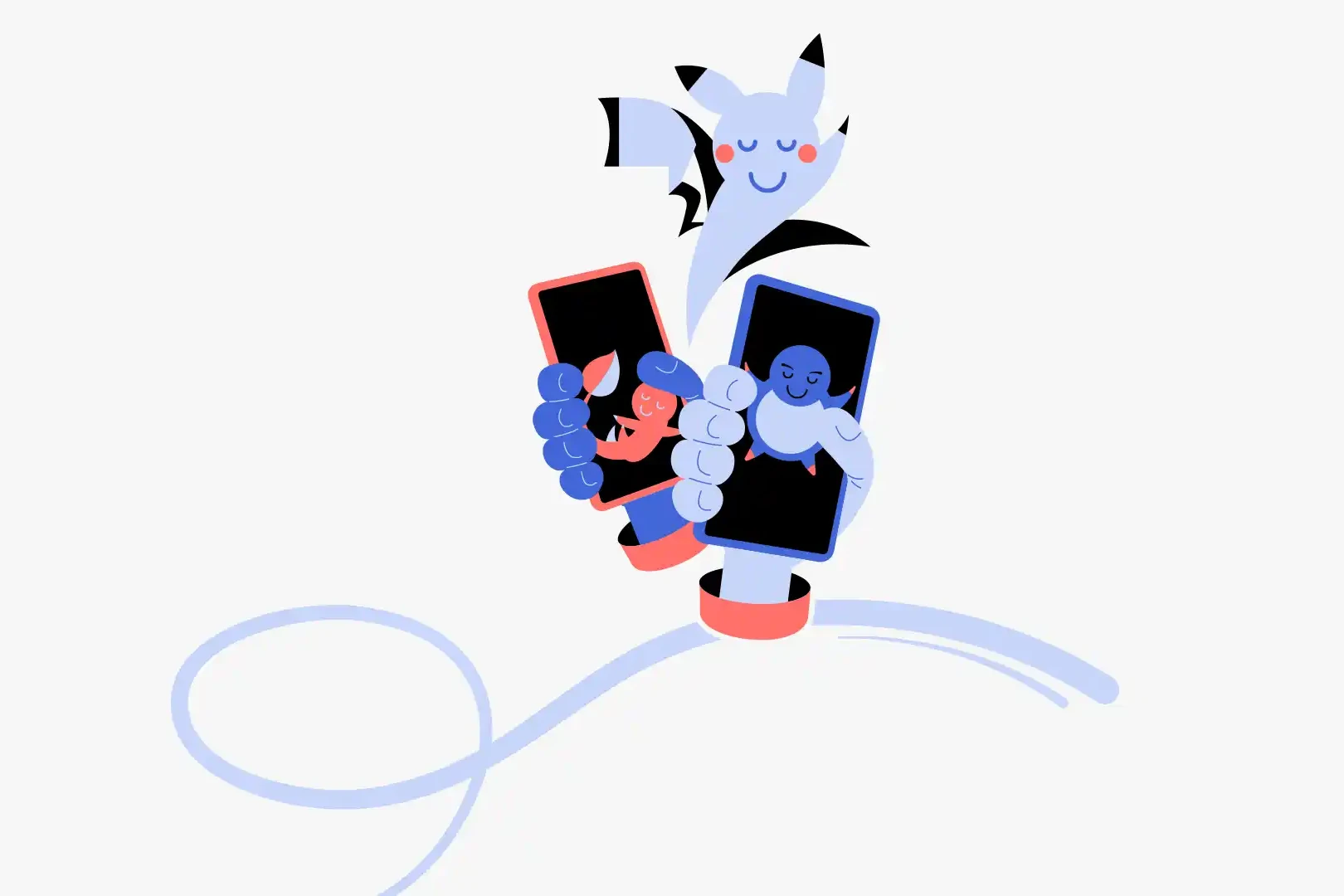

In 2017, Pokémon Go was a huge success.
Future Report 2015: The rise of wearables
It had been in the cards for some time. It was 2015, and smart devices were to become wearable accessories and be used in combination with smartphones and tablets. Google Glass was essentially a brand of glasses that could communicate through audio, record video and show information via the tiny display above the eye. This new gadget was clearly going to fundamentally change everything. But there was a catch, namely human vanity – and possibly the USD 1,500 price tag.
Aside from being hideously ugly, heads-up/hands-free technologies demanded way too much attention. To be able to put down your phone and shut off the computer is, after all, something that allows human behaviour other than that based on ones and zeros. Google Glass disappeared from the shelves in 2015 but wasn’t sent to the graveyard until 2023. But – now Apple is soon entering the scene. Their Vision Pro is said to be the future of AR/VR experience. More for indoor gaming than city cruising though.

Wearables that demand too much attention is a challenge.

Wearables that demand too much attention is a challenge.
Future Report 2017: Cars reinventing urban life
Electric vehicles have now become part of the urban landscape, with cables all over the place, and chargepoints sprouting up on streets and in car parks and residential parking facilities. Electrification is going more or less as the politicians planned; the EV fleet is growing and the charging infrastructure is gradually expanding. But what’s next?
Autonomous vehicles, many would say, and back in 2017 we predicted their rapid development. The technology now exists, for sure, but there are still no real answers to the ethical and/or moral issues. Who or what is at fault when an accident occurs? The technology is being tested in many places, with good results when it comes to aspects like accessibility and energy consumption. Put simply, it is progressing but, as is often the case, not as fast as expected.
On 16 August 2016, Ford Motor Company announced its intention to offer on-demand autonomous vehicles in 2021. By the time 2024 comes around, these driverless vehicles will still not be running on European roads and fundamentally changing the entire transport sector. No one knows when it will happen, but we know that it can. Just look at how electric vehicles entered the market.
There are still issues to solve for autonomous vehicles.


There are still issues to solve for autonomous vehicles.
Future Report 2019: Hacking the code of ageing
“If you could choose between eternal life and having children, which would you choose?” A rhetorical question that effectively drives the point home. Not even in Silicon Valley can immortality be bought – yet. But the idea that it might be possible to prolong human life has for some become an obsession and for others a business concept, and it’s a trend that has grown since 2019.
What is immortality, anyway? Is it a matter of charging your brain in the cloud, or does it take cryonics, preserving human bodies at ultra-low temperatures in the hope that they can one day be revived? Well, research is already being done on how a body can get rid of ageing “zombie cells,” on the human anti-ageing pill NAD+ and on injections of stem cells, all with the aim of prolonging human life.
More attention and funding are needed if researchers are to fully investigate the limits to human health and life expectancy. And those who think that manipulating the course of nature is unnatural should also ask themselves whether it isn’t human behaviour to push our boundaries. Only time will tell.
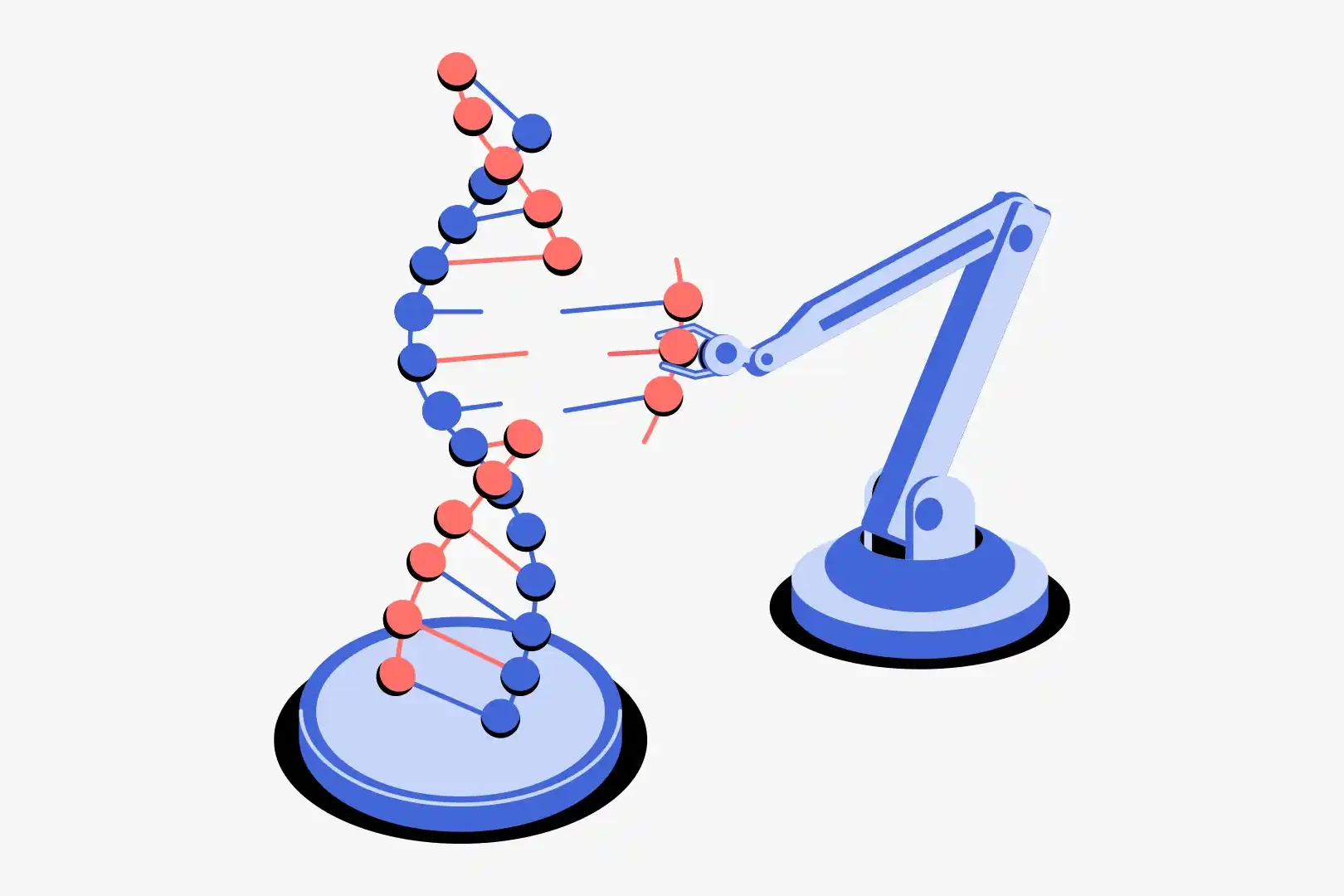
The interest for eternal life is growing.

The interest for eternal life is growing.
Future Report 2023: Redefining our digital lives
Few subjects in the world of technology have prompted such unbridled optimism and contemptuous scepticism as “the metaverse,” the next chapter for the internet. A difficult to define successor to today’s internet, though in a 3D universe. The concept itself, championed primarily by Meta, has almost disappeared from the agenda, in step with the company’s cutbacks.
But regardless of what we call it, there are two things we know: as the boundaries between the digital and the physical are increasingly blurred, we will use more of our bodies and our senses to integrate with computers, just as computers will become increasingly embedded in our everyday lives. Our digital lives will become more social, and it will be harder to differentiate between a game, a concert and a social network. Read more: The editor’s reflections on the tenth anniversary
[Sassy_Social_Share]
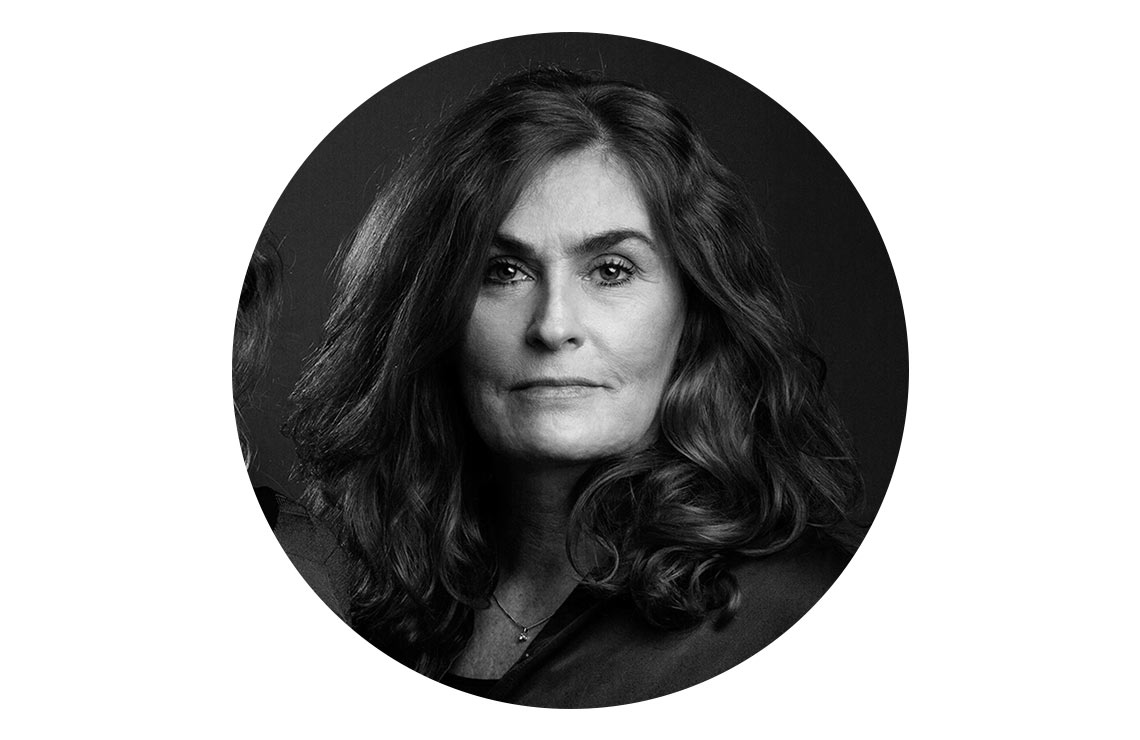
Erica Treijs
Reporter at Svenska Dagbladet
Years in Schibsted: 23
My favourite song: Chronically Cautious – Hello – Adele
Favourite songs from the last decade
Favourite songs from the last decade
In this tenth edition of the Future Report all authors have chosen their favourite song from the last decade. Listen to them all on Spotify.
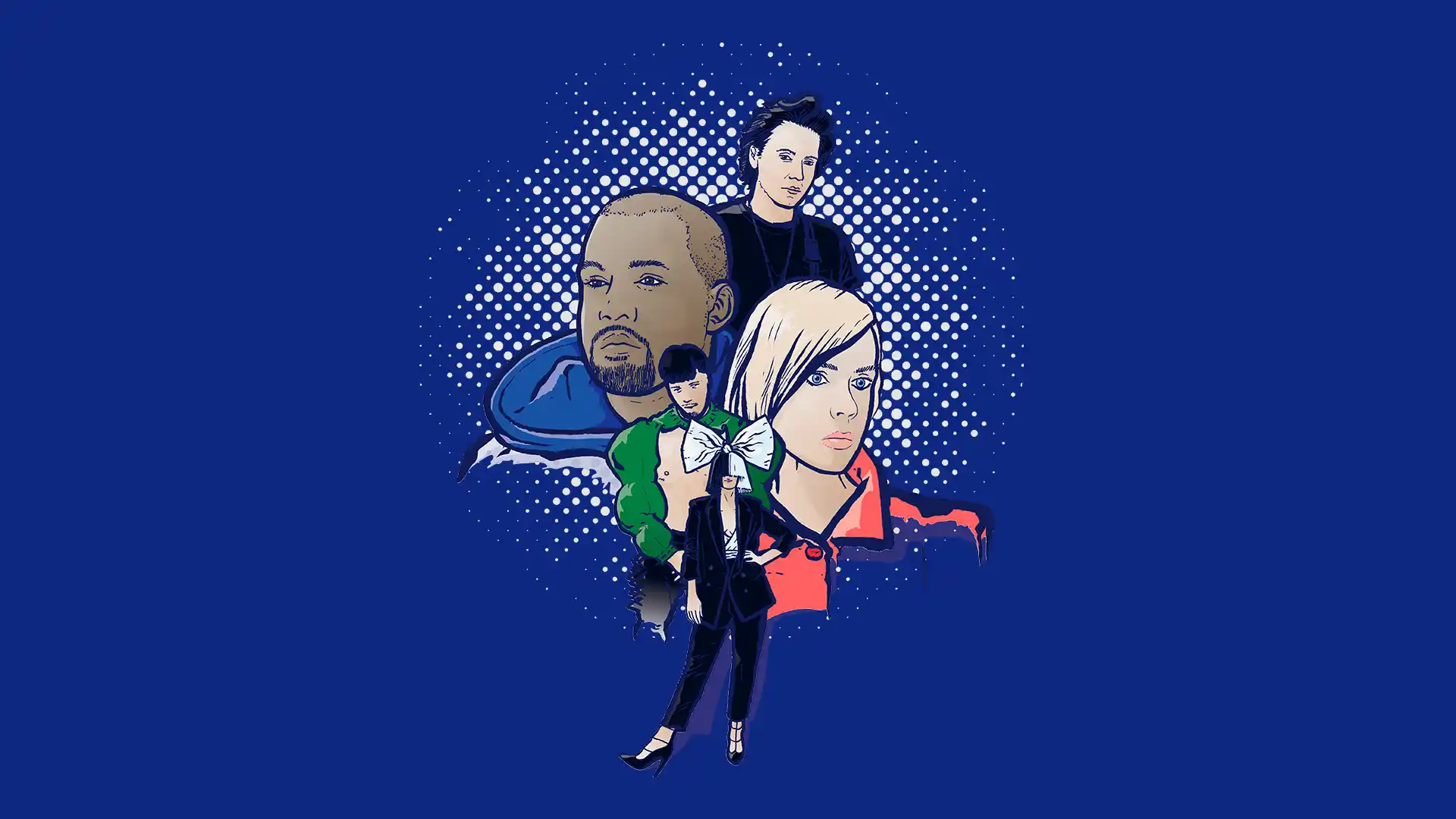
Favourite songs from the last decade
In this tenth edition of the Future Report all authors have chosen their favourite song from the last decade. Listen to them all on Spotify.
Kristin Skogen Lund, CEO
My favourite song the last decade: Formidable – Stromae
Sam Sundberg, Freelance writer, Svenska Dagbladet
My favourite song the last decade: Light years – The National
Sven Størmer Thaulow, EVP Chief Data and Technology Officer, Schibsted
My favourite song the last decade: Thinking of a Place – The War On Drugs
Ann Axelsson, Senior Product Manager, Strategic Communication, Schibsted
My favourite song the last decade: Paper Doll – John Mayer
Joacim Lund, Technology commentator, Aftenposten
My favourite song the last decade: Bråtebrann – Kverletak
Christopher Pearsell-Ross, UX designer, Schibsted Futures Lab
My favourite song the last decade: Your Best American Girl – Mitski
Ian Vännman, Strategy Advisor, Schibsted
My favourite song the last decade: I Don’t live Here Anymore – The War on Drugs
John Einar Sandvand, Senior Communications Manager, Schibsted
My favourite song the last decade: Save Your Tears – The Weeknd
Petra Wikström, Senior Director of Public Policy, Schibsted
My favourite song the last decade: Blinding Lights – The Weeknd
Sylvia Brudeli, Chief Product Officer, Nomono
My favourite song the last decade: Smilet i ditt eget speil – Chris Holsten
Hanna Lindqvist, SVP Technology, Schibsted and SVP Aurora Foundations
My favourite song the last decade: Wake Me Up – Avicii
Deng Wuor Joak, Head of Cyber Security, Distribution Innovation, Schibsted
My favourite song the last decade: Mamma Sa – Jonas Benyoub
Eivind Hjertholm Fiskerud, Project Lead AI, Nextgen Newsrooms
My favourite song the last decade: To Mminutter – Lars Vaular & Röyksopp
Andreas Cervenka, Columnist, Aftonbladet
My favourite song the last decade: Cairo, IL – The Brother Brothers
Karl Hahtovirta, Vice President Subscription Sweden, Schibsted
My favourite song the last decade: Get Lucky – Daft Punk
Moa Gårdh, Product och UX director, Aftonbladet
My favourite song the last decade: Ålen – Amason
Edgeir Aksnes, CEO and co-founder Tibber
My favourite song the last decade: Faded – Alan Walker
Nathalie Kåvin, Head of Corporate Brand, Schibsted
My favourite song the last decade: Stark & Sårbar – Moonica Mac
Camilla Buch, Communication Manager, Schibsted
My favourite song the last decade: Chronically Cautious – Braden Bales
Christine Gelfgren, Marketing Strategist, Schibsted
My favourite song the last decade: Yellow Moon – Amason
Markus Ahlberg, Chief Sustainability Officer, Schibsted
My favourite song the last decade: How Loud Your Heart Gets – Lucius
Christian Printzell Halvorsen, eCommerce & Distribution, Schibsted
My favourite song the last decade: Gospel (with Eminem) – Dr. Dre
Ricki Rebecka Petrini, Head of Marketing & Communications
My favourite song the last decade: Novacane – Frank Ocean
Adam Svanell, Head of Documentary, SvD
My favourite song the last decade: Mam Yinne Wa – Alogte Oho & His Sounds of Joy
Julie Schoen, Press Manager, DBA
My favourite song the last decade: Stor mand – Tobias Rahim and Andreas Odbjerg
Gard Steiro, Publisher, VG
My favourite song the last decade: I Need Never Get Oold – Nathaniel Rateliff & The Night Sweats
Lena K Samuelsson, Founder of Schibsted Future Report
My favourite song the last decade: Shallow – Lady Gaga & Bradley Coop
Molly Grönlund Müller, Community Researcher, IN/LAB
My favourite song the last decade: Step Out – José González
Belenn Rebecka Bekele, Community Researcher, IN/LAB
My favourite song the last decade: Son Shine – Sault
Tobias Brandel, Science Editor, SvD
My favourite song the last decade: Chandelier – Sia
Espen Rasmussen, Photo Editor, VG Stories
My favourite song the last decade: Golden Ticket – Highasakite
Enna Kursukangas, People & Culture Director, Schibsted Nordic Marketplaces
My favourite song the last decade: Cha Cha Cha – Käärijä
Michał Domagalski, Engineering Manager, Schibsted
My favourite song: Downtown – Unto Others
Nina Hermansen, Leadership Developer, Schibsted
My favourite song: Black skinhead – Kanye West
Karen Gonçalves, Global Process Owner – Employee On/Offboarding, Schibsted
My favourite song: Lady – Modjo
[Sassy_Social_Share]
10 years in pictures
10 years in pictures
Which are the most memorable and best pictures from the last decade? As Future Report celebrates its tenth anniversary we have looked back and gathered pictures from Schibsted’s newspapers to also celebrate the art of photography.
By Espen Rasmussen | Read 'A new era for photo journalism'
2022: In the trenches, five minutes from the village of Novoluhanske. Five days after this picture was taken, Russia went to war. Photo: Paal Audestad, Aftenposten.

10 years in pictures
Which are the most memorable and best pictures from the last decade? As Future Report celebrates its tenth anniversary we have looked back and gathered pictures from Schibsted’s newspapers to also celebrate the art of photography.
By Espen Rasmussen | Read 'A new era for photo journalism'
2023: Drag queen duo Lillan and Tjorven perform theatre for children at Dramaten in Stockholm, days before being harassed by right-wing extremists.
Photo: Emma-Sofia Olsson, Svenska Dagbladet
2023: Drag queen duo Lillan and Tjorven perform theatre for children at Dramaten in Stockholm, days before being harassed by right-wing extremists. Photo: Emma-Sofia Olsson, Svenska Dagbladet
2021: Refugees attempting to cross the Mediterranean in inflatable dinghies.
Photo: Photo: Espen Rasmussen, VG
2021: Refugees attempting to cross the Mediterranean in inflatable dinghies. Photo: Espen Rasmussen, VG
2020: Mask marks that hardly have time to disappear, before they are back again. A telling image of the lasting impact on healthcare workers during the pandemic.
Photography by Andreas Bardell, Aftonbladet
2020: Mask marks that hardly have time to disappear, before they are back again. A telling image of the lasting impact on healthcare workers during the pandemic. Photo by Andreas Bardell, Aftonbladet
2019: After Helene Gallis was diagnosed with breast cancer, she invited friends to feel her breast and learn what a tumour can feel like.
Photo: Monica Strømdahl, Aftenposten
2019: After Helene Gallis was diagnosed with breast cancer, she invited friends to feel her breast and learn what a tumour can feel like. Photo: Monica Strømdahl, Aftenposten
2018: More than 50 forest fires ravaged Telemark in Norway, officials called it “the worst forest fire in 27 years.” Pictured is the civil defence team at Elgsjø on Notodden in Telemark.
Photo: Helge Mikalsen, VG
2018: More than 50 forest fires ravaged Telemark in Norway, officials called it “the worst forest fire in 27 years.” Pictured is the civil defence team at Elgsjø on Notodden in Telemark. Photo: Helge Mikalsen, VG
2017: Tomas Oneborg was supposed to photograph sweets for Easter at Hötorget in Stockholm, when the terrorist act on Drottninggatan threw him into the chaos.
Photo: Tomas Oneborg, Svenska Dagbladet
2017: Tomas Oneborg was supposed to photograph sweets for Easter at Hötorget in Stockholm, when the terrorist act on Drottninggatan threw him into the chaos. Photo: Tomas Oneborg, Svenska Dagbladet
2016: The war in Syria is in its tenth year. Maha is only five. She and her family fled their hometown of Hawiga outside Mosul to escape ISIS. “I don’t dream anymore, and I’m not scared of anything,” she says.
Photo by Magnus Wennman, Aftonbladet
2016: The war in Syria is in its tenth year. Maha is only five. She and her family fled their hometown of Hawiga outside Mosul to escape ISIS. “I don’t dream anymore, and I’m not scared of anything,” she says. Photo: Magnus Wennman, Aftonbladet
2015. 26-year-old Ibrahim Abdulla under a trailer in the port city of Patras, Greece. He can’t say for sure how many times he has tried to get the ferry to Italy.
Photo: Paul S. Amundsen, Bergens Tidende
2015. 26-year-old Ibrahim Abdulla under a trailer in the port city of Patras, Greece. He can’t say for sure how many times he has tried to get the ferry to Italy. Photo: Paul S. Amundsen, Bergens Tidende
2014: The children of Gaza were hit hardest by the war. A fourth of the Palestinian victims were minors. As we produce the report in the autumn of 2023, the Middle East conflict has once again exploded.
Photo: Yvonne Åsell, Svenska Dagbladet.
2014: The children of Gaza were hit hardest by the war. A fourth of the Palestinian victims were minors. As we produce the report in the autumn of 2023, the Middle East conflict has once again exploded. Photo: Yvonne Åsell, Svenska Dagbladet.